Mohamad Roshanzamir
A machine learning approach for Premature Coronary Artery Disease Diagnosis according to Different Ethnicities in Iran
Jan 31, 2025Abstract:Premature coronary artery disease (PCAD) refers to the early onset of the disease, usually before the age of 55 for men and 65 for women. Coronary Artery Disease (CAD) develops when coronary arteries, the major blood vessels supplying the heart with blood, oxygen, and nutrients, become clogged or diseased. This is often due to many risk factors, including lifestyle and cardiometabolic ones, but few studies were done on ethnicity as one of these risk factors, especially in PCAD. In this study, we tested the rank of ethnicity among the major risk factors of PCAD, including age, gender, body mass index (BMI), visceral obesity presented as waist circumference (WC), diabetes mellitus (DM), high blood pressure (HBP), high low-density lipoprotein cholesterol (LDL-C), and smoking in a large national sample of patients with PCAD from different ethnicities. All patients who met the age criteria underwent coronary angiography to confirm CAD diagnosis. The weight of ethnicity was compared to the other eight features using feature weighting algorithms in PCAD diagnosis. In addition, we conducted an experiment where we ran predictive models (classification algorithms) to predict PCAD. We compared the performance of these models under two conditions: we trained the classification algorithms, including or excluding ethnicity. This study analyzed various factors to determine their predictive power influencing PCAD prediction. Among these factors, gender and age were the most significant predictors, with ethnicity being the third most important. The results also showed that if ethnicity is used as one of the input risk factors for classification algorithms, it can improve their efficiency. Our results show that ethnicity ranks as an influential factor in predicting PCAD. Therefore, it needs to be addressed in the PCAD diagnostic and preventive measures.
Explainable Artificial Intelligence for Drug Discovery and Development -- A Comprehensive Survey
Sep 21, 2023Abstract:The field of drug discovery has experienced a remarkable transformation with the advent of artificial intelligence (AI) and machine learning (ML) technologies. However, as these AI and ML models are becoming more complex, there is a growing need for transparency and interpretability of the models. Explainable Artificial Intelligence (XAI) is a novel approach that addresses this issue and provides a more interpretable understanding of the predictions made by machine learning models. In recent years, there has been an increasing interest in the application of XAI techniques to drug discovery. This review article provides a comprehensive overview of the current state-of-the-art in XAI for drug discovery, including various XAI methods, their application in drug discovery, and the challenges and limitations of XAI techniques in drug discovery. The article also covers the application of XAI in drug discovery, including target identification, compound design, and toxicity prediction. Furthermore, the article suggests potential future research directions for the application of XAI in drug discovery. The aim of this review article is to provide a comprehensive understanding of the current state of XAI in drug discovery and its potential to transform the field.
What happens in Face during a facial expression? Using data mining techniques to analyze facial expression motion vectors
Sep 12, 2021


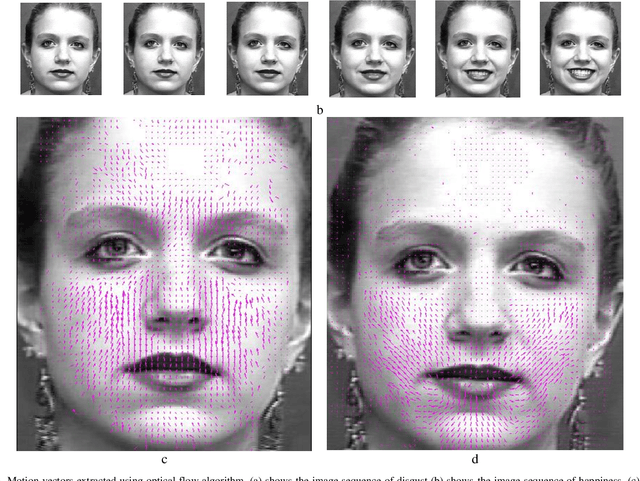
Abstract:One of the most common problems encountered in human-computer interaction is automatic facial expression recognition. Although it is easy for human observer to recognize facial expressions, automatic recognition remains difficult for machines. One of the methods that machines can recognize facial expression is analyzing the changes in face during facial expression presentation. In this paper, optical flow algorithm was used to extract deformation or motion vectors created in the face because of facial expressions. Then, these extracted motion vectors are used to be analyzed. Their positions and directions were exploited for automatic facial expression recognition using different data mining techniques. It means that by employing motion vector features used as our data, facial expressions were recognized. Some of the most state-of-the-art classification algorithms such as C5.0, CRT, QUEST, CHAID, Deep Learning (DL), SVM and Discriminant algorithms were used to classify the extracted motion vectors. Using 10-fold cross validation, their performances were calculated. To compare their performance more precisely, the test was repeated 50 times. Meanwhile, the deformation of face was also analyzed in this research. For example, what exactly happened in each part of face when a person showed fear? Experimental results on Extended Cohen-Kanade (CK+) facial expression dataset demonstrated that the best methods were DL, SVM and C5.0, with the accuracy of 95.3%, 92.8% and 90.2% respectively.
Fusion of convolution neural network, support vector machine and Sobel filter for accurate detection of COVID-19 patients using X-ray images
Feb 13, 2021
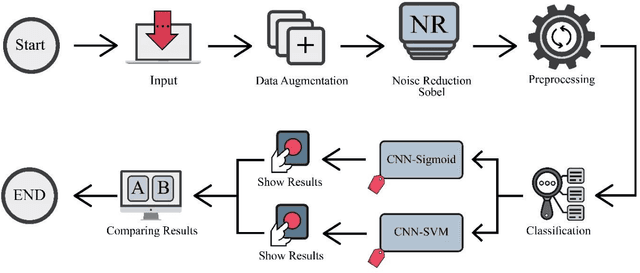

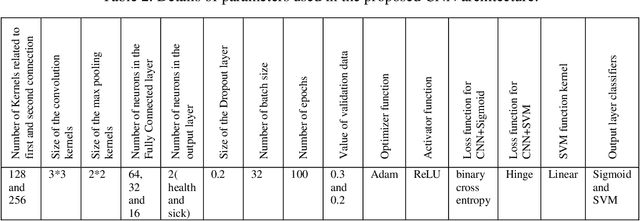
Abstract:The coronavirus (COVID-19) is currently the most common contagious disease which is prevalent all over the world. The main challenge of this disease is the primary diagnosis to prevent secondary infections and its spread from one person to another. Therefore, it is essential to use an automatic diagnosis system along with clinical procedures for the rapid diagnosis of COVID-19 to prevent its spread. Artificial intelligence techniques using computed tomography (CT) images of the lungs and chest radiography have the potential to obtain high diagnostic performance for Covid-19 diagnosis. In this study, a fusion of convolutional neural network (CNN), support vector machine (SVM), and Sobel filter is proposed to detect COVID-19 using X-ray images. A new X-ray image dataset was collected and subjected to high pass filter using a Sobel filter to obtain the edges of the images. Then these images are fed to CNN deep learning model followed by SVM classifier with ten-fold cross validation strategy. This method is designed so that it can learn with not many data. Our results show that the proposed CNN-SVM with Sobel filtering (CNN-SVM+Sobel) achieved the highest classification accuracy of 99.02% in accurate detection of COVID-19. It showed that using Sobel filter can improve the performance of CNN. Unlike most of the other researches, this method does not use a pre-trained network. We have also validated our developed model using six public databases and obtained the highest performance. Hence, our developed model is ready for clinical application
Handling of uncertainty in medical data using machine learning and probability theory techniques: A review of 30 years
Aug 23, 2020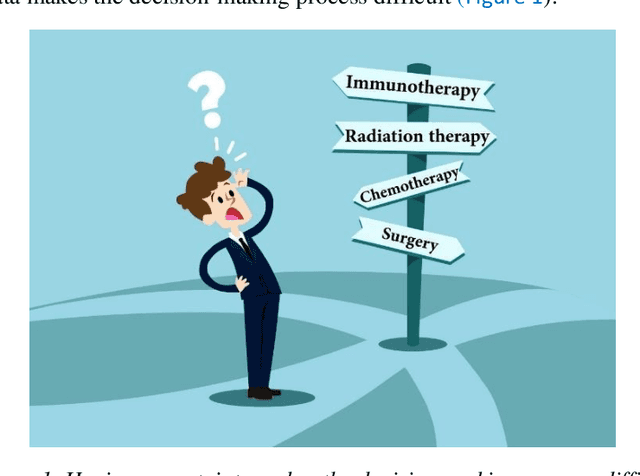
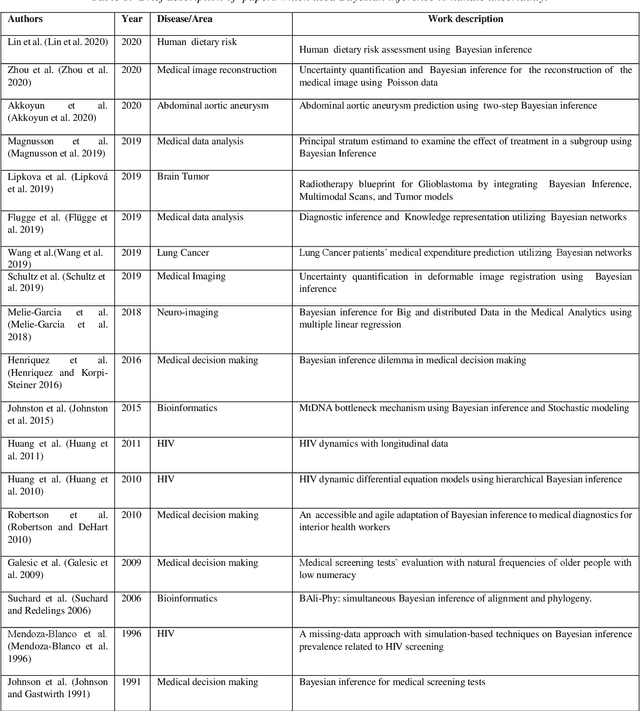
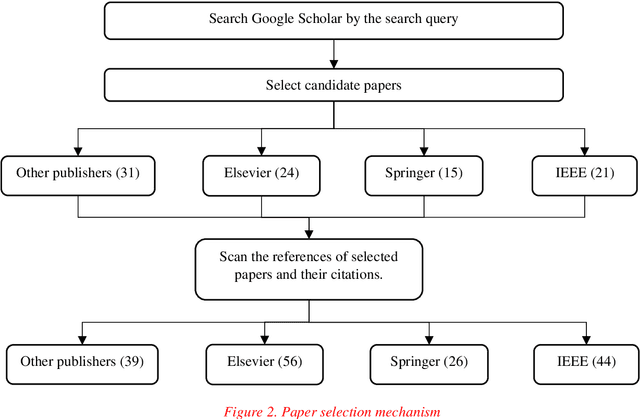
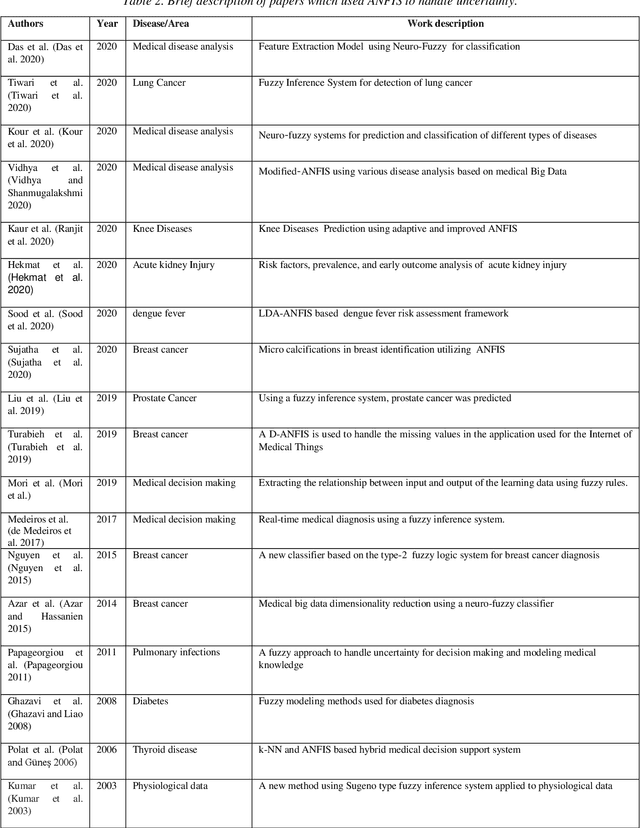
Abstract:Understanding data and reaching valid conclusions are of paramount importance in the present era of big data. Machine learning and probability theory methods have widespread application for this purpose in different fields. One critically important yet less explored aspect is how data and model uncertainties are captured and analyzed. Proper quantification of uncertainty provides valuable information for optimal decision making. This paper reviewed related studies conducted in the last 30 years (from 1991 to 2020) in handling uncertainties in medical data using probability theory and machine learning techniques. Medical data is more prone to uncertainty due to the presence of noise in the data. So, it is very important to have clean medical data without any noise to get accurate diagnosis. The sources of noise in the medical data need to be known to address this issue. Based on the medical data obtained by the physician, diagnosis of disease, and treatment plan are prescribed. Hence, the uncertainty is growing in healthcare and there is limited knowledge to address these problems. We have little knowledge about the optimal treatment methods as there are many sources of uncertainty in medical science. Our findings indicate that there are few challenges to be addressed in handling the uncertainty in medical raw data and new models. In this work, we have summarized various methods employed to overcome this problem. Nowadays, application of novel deep learning techniques to deal such uncertainties have significantly increased.
 Add to Chrome
Add to Chrome Add to Firefox
Add to Firefox Add to Edge
Add to Edge